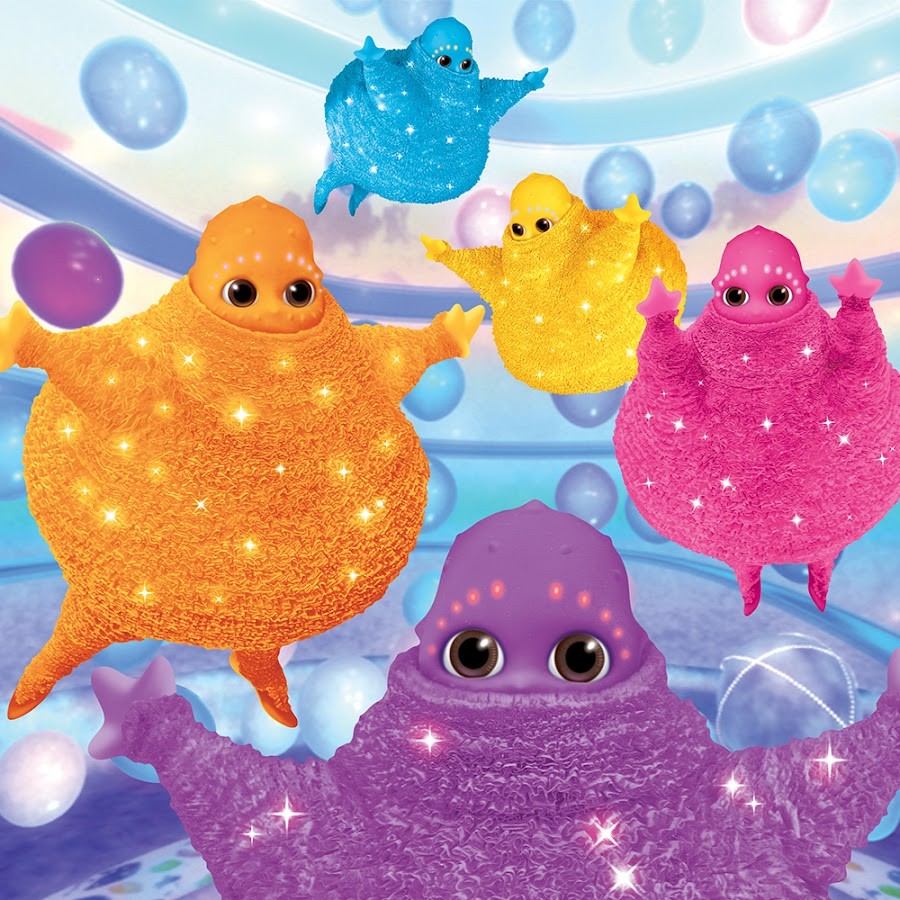Boohbah. Just the name itself might evoke a sense of bewilderment, or perhaps a faint, unsettling memory from childhood TV watching. For those unfamiliar, Boohbah was a children’s television program aimed at toddlers and preschoolers, featuring five brightly colored, amorphous characters who communicated in gibberish and engaged in abstract, movement-based activities. While intended to be educational and entertaining for young children, Boohbah often elicits a very different reaction from adult viewers. Is Boohbah a bad show? For many adults, the answer leans towards a resounding yes, and here’s why.
 Boohbah characters posing in a promotional image
Boohbah characters posing in a promotional image
To understand the confusion and criticism surrounding Boohbah, it’s helpful to first grasp its premise. According to IMDb, Boohbah was designed for “toddlers, preschoolers, and young elementary school students.” The show centers on “5 colorful characters with their own secret language as they teach children basic motor skills and common things like counting and identifying colors.” In theory, this sounds like standard fare for children’s programming. Shows aimed at this age group often utilize non-verbal communication, vibrant visuals, and simple concepts to engage young minds.
However, Boohbah took these elements to an extreme that often crossed the line into the absurd, at least for adult sensibilities. The characters themselves, with their peculiar shapes and movements, are often described as unsettling. Imagine Teletubbies but with an added layer of abstraction and a distinct lack of coherent dialogue. This can lead to a jarring viewing experience for adults accustomed to more conventional forms of entertainment, even in children’s television.
One common sentiment among adults watching Boohbah is a feeling of being in a psychedelic experience. The show’s reliance on abstract visuals and sound effects, coupled with the characters’ bizarre antics, can create a disorienting and even uncomfortable viewing experience. It’s a far cry from the typically comforting and predictable nature of most children’s shows.
Interestingly, despite the adult confusion, many children, including myself, were captivated by Boohbah. As a child, I apparently loved the show, enthusiastically bouncing in my doorway jumper while watching the Boohbahs’ on-screen adventures. This personal anecdote highlights a key point: Boohbah’s target audience is not adults. What adults perceive as strange or nonsensical might be engaging and stimulating for young children.
The age appropriateness of Boohbah is another point of contention. While officially aimed at children aged three to six, some argue that its non-verbal nature and simplistic content are better suited for an even younger demographic, perhaps toddlers aged two to four. By the age of six, many children are already developing more complex cognitive skills and may find Boohbah’s abstract approach less engaging than intended.
Perhaps the biggest question surrounding Boohbah’s effectiveness as a children’s show is its actual impact on young viewers. Does it truly encourage motor skills and learning, or does it simply mesmerize children with its bright colors and strange movements? Reviews from parents offer a mixed bag of responses. While some parents reported their children being active and engaged while watching, a significant number observed their children becoming passive and glazed-eyed, seemingly more captivated by the visuals than actively participating or learning. According to user reviews on Common Sense Media, parents have expressed concerns about their children becoming “glued to the screen” in a passive state while watching Boohbah.
The average parent rating on Common Sense Media reflects this mixed reception, with an average of three out of five stars and an average age recommendation of five and up, which is older than the show’s target demographic. Even more surprisingly, children themselves on the platform rated Boohbah even lower, with a two-star average and an average age recommendation of ten and older, suggesting that even young viewers may find the show lacking in substance or engagement as they get older.
In conclusion, while Boohbah was intended to be an educational and entertaining show for young children, its unconventional and abstract nature often leads adults to question its value and effectiveness. The show’s bizarre visuals and lack of traditional narrative can be off-putting for adult viewers, leading many to see Boohbah as a “bad show” in terms of entertainment value and potential educational impact. However, it’s important to remember that Boohbah was created for a very specific audience – young children – and their perception of the show may differ drastically from that of adults. Whether Boohbah is truly a “bad show” is ultimately subjective and depends on the viewer’s age and expectations. For adults, it might be a confusing and unsettling experience, but for some toddlers, it might just be strangely captivating.
References
- IMDb: https://www.imdb.com/title/tt0398429/
- Common Sense Media: https://www.commonsensemedia.org/tv-reviews/boohbah/user-reviews/adult